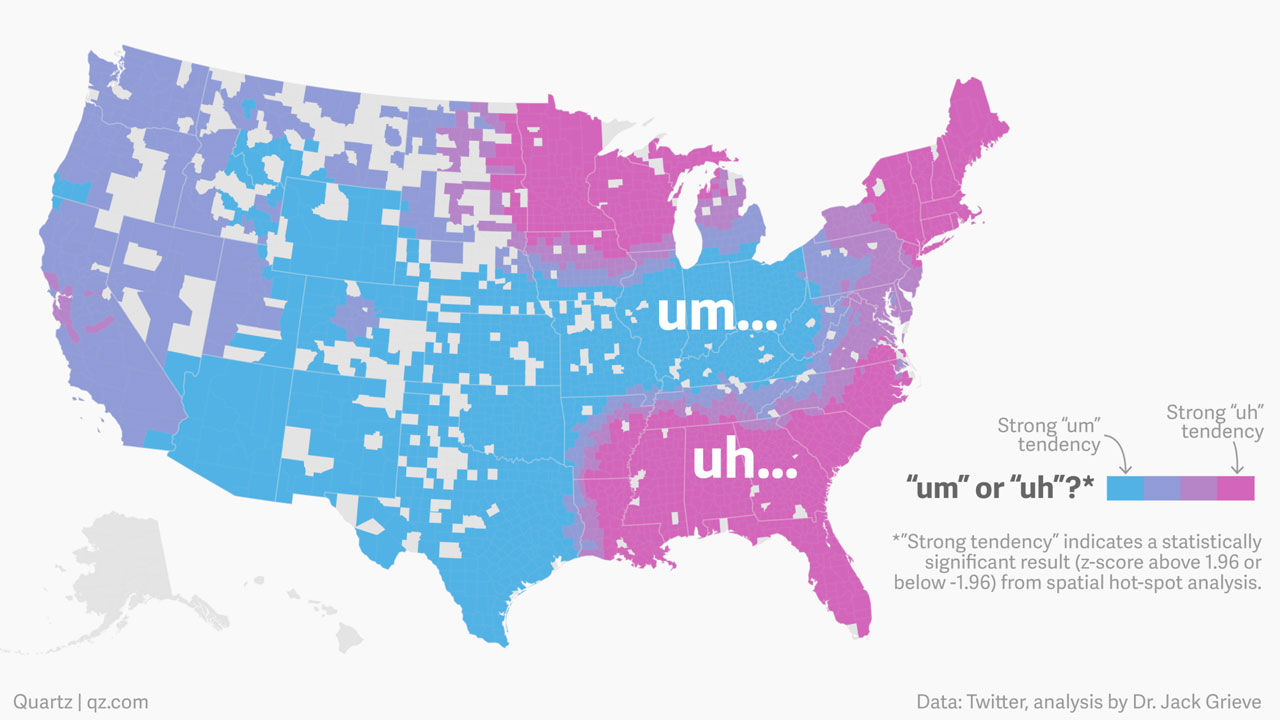Meaningless words like “uh” and “um” say more about their speakers than you might think, according to forensic linguist Jack Grieve. Grieve used data from Twitter to map the frequency of “uh”s and “um”s throughout the country. The winners are clear in some areas, but muddled in others:
Grieve said the use of “um” looks to follow the elusive “Midland dialect,” which linguists have suspected follows the Ohio River southwest from central Pennsylvania. That accounts for most of the blue that sweeps from West Virginia all the way to Arizona. Grieve said the “uh” and “um” analysis is the first time his research has shown clear evidence of the Midland dialect.
The map also shows that usage on the west coast is harder to pin down. The purplish color leans toward “um” in most of California, aside from the Bay Area, but there is no clear winner west of Arizona.
There is even more to the “uh”/”um” divide: another researcher, Mark Lieberman, found that the use of “uh” increases with age, and women say “um” 22% more than men. Meanwhile, men say “uh” about two times as frequently as women. Uh, that’s a lot.
Lieberman has an interesting theory as to how this all, um, ties together:
Liberman also posits that “um” and “uh” portray language fluency and intelligence differently. “People tend to use UM when they’re trying to decide what to say, and UH when they’re trying to decide how to say it,” he told me in an email. “As people get older, they have less trouble deciding what to say (because they know more stuff), and more trouble deciding how to say it (because they know more words and fixed phrases, and so have a harder time making a choice). As a result, older people use fewer UMs and more UHs.”
(Image: Quartz)


